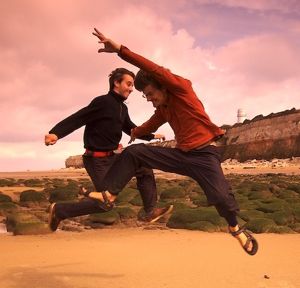- Home
- Benefits of Massage
- Somatic Practices
As an affiliate for Bookshop, Amazon, and other programs, I may earn a small commission for products purchased through links. This doesn't affect the price you pay. Privacy policy and disclosures.
Search this site:
What are Somatic Practices?
Somatic practices are integrated body-mind approaches that lead you to focus on the internal physical sensations, perceptions, and experiences of your body. The purpose is to improve your awareness, function, and overall health.
The field of somatics includes somatic movement practices, somatic bodywork, and somatic psychology and therapy.
Somatic Movement Practices
Somatic movement practices take different approaches to creating awareness and change. These practices improve your natural control of your body’s muscular system, reduce stress, increase your energy, reduce or get rid of your chronic pain, and improve your physical performance.
Alexander Technique is an educational process that teaches you how to change the habits you want to change, and how to use your body with more freedom and ease.
Body-Mind Centering® is based in experiential anatomy, using movement, voice, breath, perceptions, and touch.
Continuum Movement uses sensation, breath, sound, and movement for both subtle and dynamic explorations.
Eutony is a Western way of experiencing unity of the whole person.
Feldenkrais Method® is an educational system that helps you develop a functional awareness of yourself in the environment.
Hanna Somatics releases chronic pain patterns through the use of somatic exercises.
Kinetic Awareness®, also known as The Ball Work, uses various sizes of rubber balls to help make positive changes in the body.
Laban Movement Analysis and Bartenieff Fundamentals are structured systems for analyzing and changing movement patterns.
Sensory Awareness looks at the total functioning person and the development of a person’s responsiveness toward life.
The Trager® Approach helps you learn to move effortlessly and freely, relieving pain and creating deep relaxation. Trager includes both movement and bodywork components.
Focusing is a somatic psychotherapy technique that uses body awareness to help create change.
Highly recommended reading if you want a broad view of the field of somatics and bodywork: Bone, Breath, & Gesture: Practices of Embodiment contains writings by and interviews with pioneers in the field, including Charlotte Selver, F. M. Alexander, Moshe Feldenkrais, Ida Rolf, Thomas Hanna, and 12 other somatic innovators.
History of Somatics
The following is adapted from "The Way of the Flesh: A Brief History of the Somatics Movement" by Don Hanlon Johnson, Noetic Sciences Review #29, Spring 1994, p. 26.
Somatic education first appeared in the mid-to-late 1800s as part of the Gymnastik movement in Northern Europe and the Eastern United States. Gymnastik practitioners used expressive movement, sensory awareness, sound, music, and touch to do sophisticated healing work.
Discerning the early history of somatics requires finding oral history, brief mentions in exercise books, passing references to a teacher, or a footnote in a history of dance. Pioneers in the field included Francois Delsarte, Genevieve Stebbins, Bess Mensendieck, Leo Kofler, and Emile Jacques-Dalcroze.
Their new vision of embodiment differed from the dominant models in biomedicine, physical education, religion, and classical ballet. For example, instead of training dancers and athletes to shape their bodies to fit a normative classical form, they encouraged individual expressiveness and a return to a more natural body, allowing forms of movement to emerge from within rather than imposing them—what somatics practitioners call "inhabiting" the body.
In the late 1800s, F. M. Alexander in Melbourne, Australia, and Leo Kofler in New York both experienced chronic laryngitis for which physicians could find no cause or cure. Conducting independent healing investigations, Alexander and Kofler both discovered that learning to fully inhabit their body movements, posture, and voice, healed the laryngitis. Similar experiences happened to Moshe Feldenkrais, Ida Rolf, Gerda Alexander, Ilse Middendorf, and others who discovered healing capacities inherent in heightened bodily experience.
Because the innovators of somatic education worked mostly with non-verbal practices, few texts describe the early work, and much of the early knowledge has been lost. World War I broke up the early interdisciplinary somatics community. World War II further scattered the pioneers. Many had to put aside the more visionary aspects of their work and eke out a living as refugees, marketing their work under the more acceptable forms of physical rehabilitation or psychotherapy.
Then, in the 1960s, the Esalen Institute and a growing exploration of different states of consciousness provided an opportunity for a revival of the vision of somatics. By the end of the 1980s, international conferences on Somatic Education had been held in Paris, Zurich, Naples, Montevideo, Montreal, Strasbourg, San Francisco, and New York.
Photo Credit: Matthew Venn/Flickr/CC
